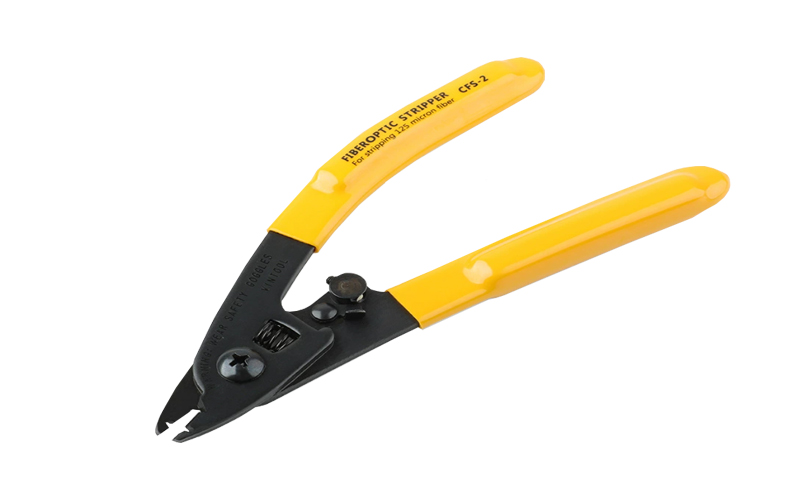
This is a highly specialized hand tool essential for anyone working with fiber optic cables, particularly for field terminations, splicing, and patch panel installations. In simple terms, this is a precision micro-stripping tool used to remove the protective plastic coatings from an optical fiber in preparation for termination (e.g., into a field-assembly connector like the FastConnect we discussed) or splicing.
Its sole purpose is to expose the bare glass fiber without creating any micro-bends, nicks, or scratches. Even a microscopic scratch on the glass fiber can drastically weaken it and cause it to break during handling or, even worse, cause signal loss (attenuation) after installation.
✅ Precision-Matched Hole Sizes: The two ports are machined to exact tolerances to match standard fiber coating diameters (e.g., 250µm and 900µm). This ensures the blade cuts through the coating but doesn't contact the glass.
✅ Adjustable Depth Stop: Many high-quality models have a screw to adjust how deeply the blades close. This is a critical safety feature to prevent the user from accidentally cutting too deep and scoring the glass fiber.
✅ Spring-Loaded Handles: The tool automatically opens after each squeeze, making the stripping process faster and less fatiguing for the hand.
✅ Blade Design: The blades are typically "V"-shaped or hollow-ground to apply even, concentric pressure around the coating, shearing it cleanly instead of squeezing and pulling it.
✅ Durability: The high-carbon steel construction ensures the blades remain sharp through thousands of stripping operations, making it a reliable long-term tool for professionals.
How It Is Used (The Process)
The process for a typical 900µm tight-buffered fiber would be:
🔹 Strip the Outer Jacket: First, use a larger cable stripper to remove the outer jacket of the multi-fiber cable.
🔹 Expose the Fiber: Identify the individual tight-buffered fiber you need to terminate.
🔹 First Strip (900µm Port): Place the fiber into the larger port of the stripping pliers. Gently squeeze and pull the tool along the length of the fiber to cleanly remove the ~900µm tight buffer. This exposes the thinner, colored 250µm coated fiber.
🔹 Second Strip (250µm Port): Carefully place the exposed 250µm fiber into the smaller port of the pliers. Squeeze gently and pull to remove the acrylic coating. This reveals the bare 125µm glass fiber.
🔹 Cleave: The perfectly clean, unscratched bare fiber is now ready to be cleaved (precisely snapped) with a fiber cleaver to create a perfect end-face for connection or splicing.
🔹 Crucial Warning: The tool must be used with a straight, gentle pulling motion. Twisting or jerking can snap the fragile fiber.

© 2024-2026 ARTIC FIBER OPTIC CO.,LTD. All Rights Reserved.